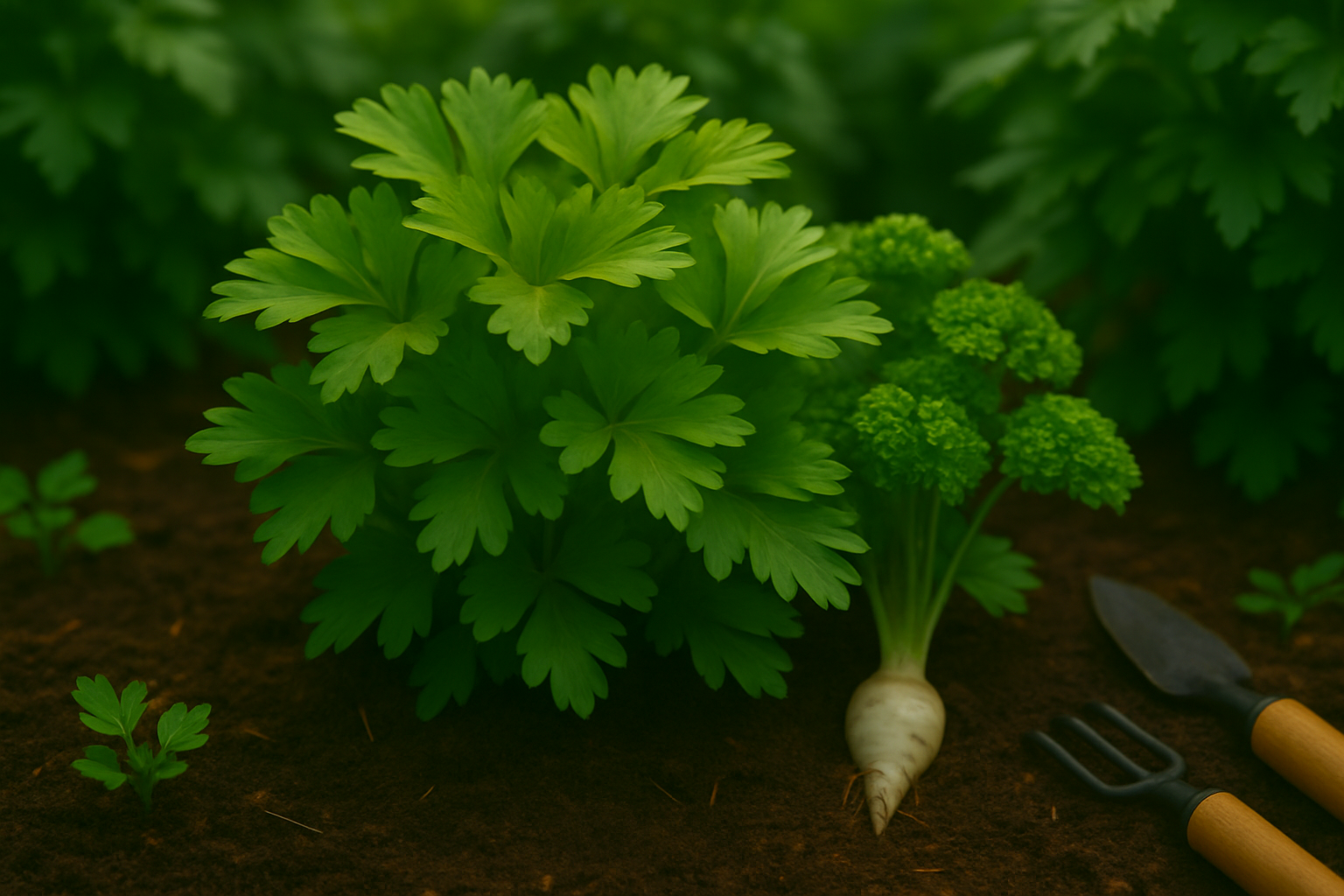Common Pests That Attack Parsley
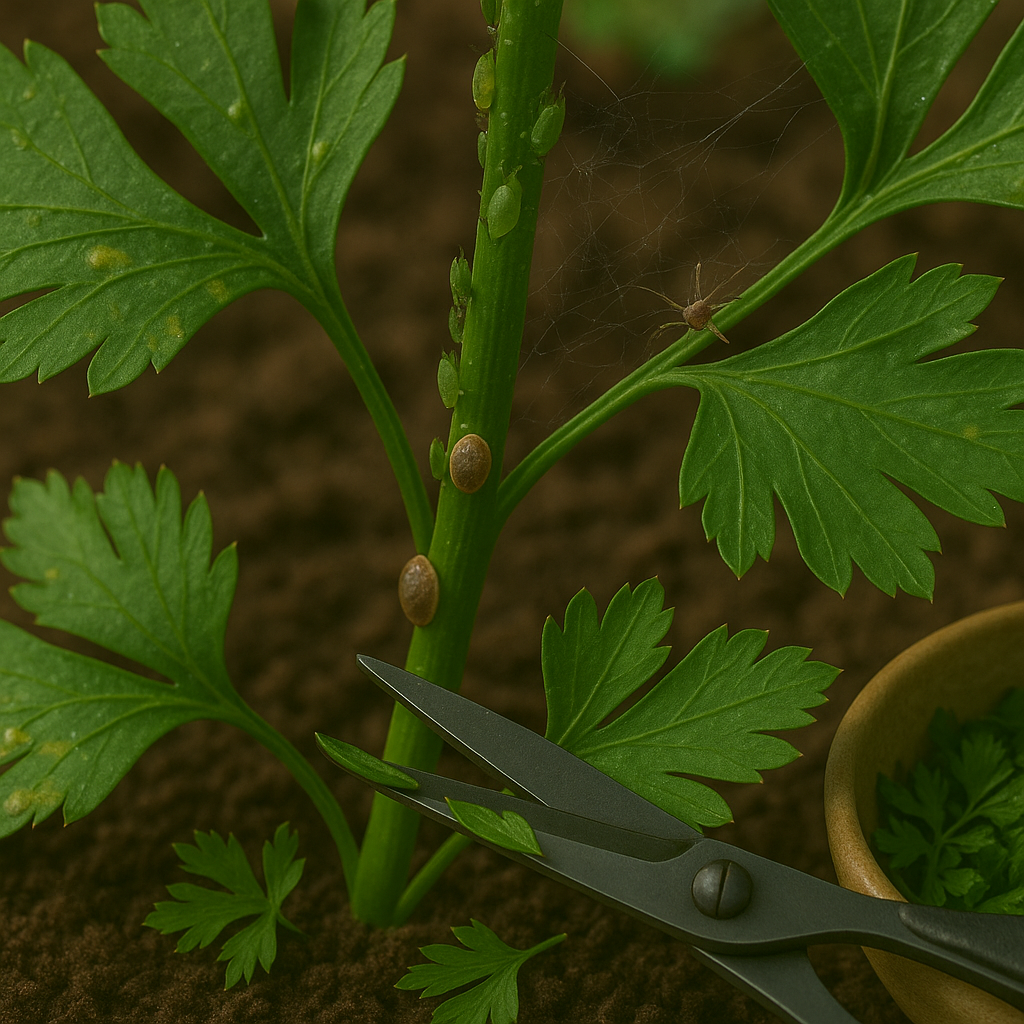
Parsley, with its tender leaves and aromatic stems, often attracts a variety of garden pests due to its lush, nutrient-rich growth. Early identification of these pests is crucial to protect your plants and ensure a healthy harvest.
Among the most common parsley invaders are:
- Aphids — tiny green or black insects that cluster on stems and the undersides of leaves, leaving behind sticky honeydew and causing yellow, curling foliage.
- Spider mites — minuscule pests that weave fine webs and cause stippled, faded leaves which eventually turn brown.
- Scale insects — small, round bumps along stems and veins that suck sap, often leading to weak, stunted plants.
- Mealybugs — easily spotted by their white, cottony appearance; they gather in leaf joints and secrete honeydew, which attracts sooty mold.
- Fungus gnats — small, black, mosquito-like insects flitting around the soil surface; while adults don’t feed on the plant, their larvae damage roots, causing wilting and poor growth.
- Fruit flies — especially in warm, damp environments, these hover over parsley patches; their larvae feed on decaying plant matter and can damage roots.
- Whiteflies — tiny, white, moth-like insects that fly up in clouds when parsley is disturbed; their feeding causes yellow spots and wilting leaves.
Accurately identifying which pest is attacking your parsley before applying any treatment is essential, as different pests require specific solutions. Confusing one for another could mean wasted effort and continued plant stress.
Regularly checking the undersides of leaves, inspecting stems closely, and monitoring soil health are practical, preventative steps. These help catch infestations early, giving you the best chance to intervene effectively before major damage sets in.
Natural and Organic Pest Control Methods
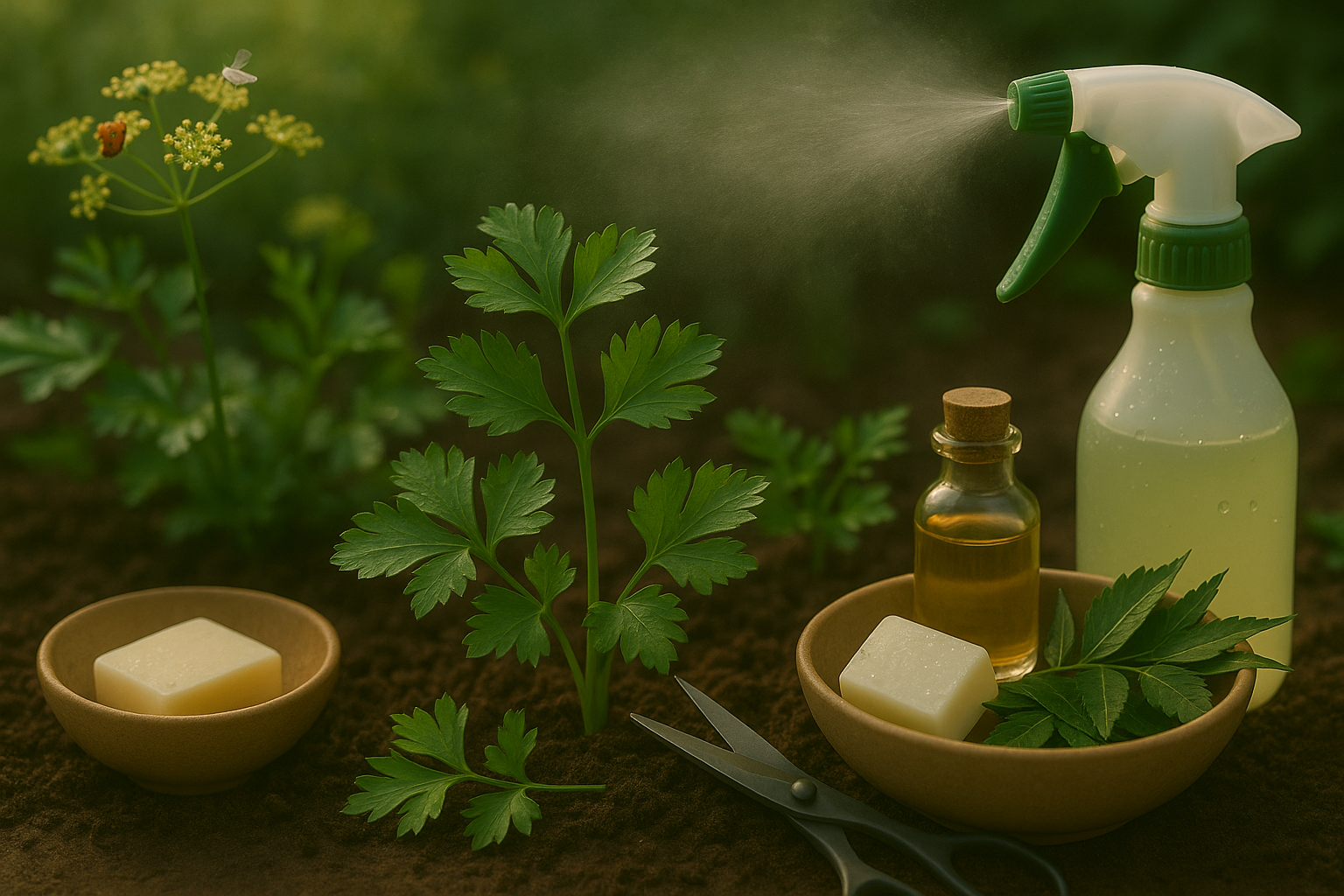
Switching to natural and organic pest control methods is a great way to keep your garden healthy without harming the environment or beneficial insects. Start with manual removal—simply picking pests like caterpillars or beetles off your plants can be surprisingly effective for small infestations.
For softer-bodied pests like aphids, a strong blast of water from the hose will often dislodge them and reduce their numbers quickly. Insecticidal soap is another eco-friendly option: it’s easy to make from a mix of water, mild soap, and a little oil, and works by breaking down pest membranes without leaving toxic residue.
Neem oil, extracted from the seeds of the neem tree, interrupts the life cycle of insects and acts as both a repellent and growth inhibitor—just spray it on affected leaves early in the morning or late afternoon to avoid burning your plants.
Finally, encourage natural predators like ladybugs and lacewings by planting pollen-rich flowers and avoiding broad-spectrum pesticides; these beneficial insects can drastically reduce pest populations over time.
While organic methods are gentler on the earth and safer for pets and children, they may require more frequent monitoring and application compared to chemical solutions, which tend to act faster but can harm helpful insects and impact soil health.
The key to success with natural pest control is consistency—check your garden regularly, intervene early, and rotate methods as needed for persistent problems. With a little patience and observation, you’ll develop a thriving, balanced ecosystem right in your backyard.
How to Treat Specific Parsley Pests
Dealing with common parsley pests doesn’t have to mean resorting to harsh chemicals right away. For aphids, a daily habit of inspecting your parsley and squishing visible clusters by hand can make a surprising difference. You can also spritz the leaves with a mild solution of dish soap and water (about a teaspoon per liter), which smothers the bugs without harming your crop. Consider planting parsley alongside strong-smelling herbs like cilantro or chives—these companions help deter aphids naturally.
Spider mites can quickly take over in hot, dry conditions, so keeping your parsley well-watered and occasionally misting the leaves raises humidity and keeps mites at bay. If you spot the fine webbing they leave behind, try spraying the plant thoroughly with water or introduce predatory mites, which are available from many garden centers and can eat their harmful cousins.
For scale insects and mealybugs, dip a cotton swab in rubbing alcohol and gently dab each pest to dissolve its protective coating, making them easy to wipe away. Regular pruning of heavily infested stems, combined with a weekly application of neem oil, also helps keep populations in check.
Whiteflies and fungus gnats or fruit flies can be managed by placing yellow sticky traps near your parsley. These traps catch flying adults before they can lay eggs, breaking the reproductive cycle. Biological controls like beneficial nematodes are another smart option for gnats, especially when they’re breeding in damp soil.
If these targeted strategies don’t reduce pests after a week or two, it may be time for stronger measures such as organic pesticides labeled safe for edibles. Always read labels and use them sparingly to avoid harming beneficial insects. For stubborn or mixed infestations, combining two or more treatments—like soapy water sprays alongside sticky traps and regular pruning—often works best.
Above all, monitor your plants closely and act early, as catching problems fast is the key to keeping parsley lush, healthy, and pest-free.
When and How to Use Chemical Remedies
Chemical remedies for garden pests should be used only after all organic and manual control methods have failed, especially in cases of severe infestations that threaten the survival of your edible herbs. While chemical pesticides can be effective, they carry significant risks: residues may linger on your herbs, compromising food safety, and many products can harm important pollinators like bees and butterflies.
If you decide that chemical treatment is absolutely necessary, choose pesticides specifically labeled as safe for edible plants, and opt for targeted formulas rather than broad-spectrum products. Always read the label carefully—follow instructions on dilution, timing, and harvest intervals to ensure your herbs remain safe to eat.
Use minimal amounts and apply only to affected areas, avoiding sprays on flowers to protect pollinators. Wear gloves, use a dedicated sprayer, and keep pets and children away during application. Make chemicals your last line of defense; sometimes revisiting organic options like neem oil, insecticidal soap, or manual removal after a few days can improve results without compromising safety.
Preventing Parsley Pest Problems
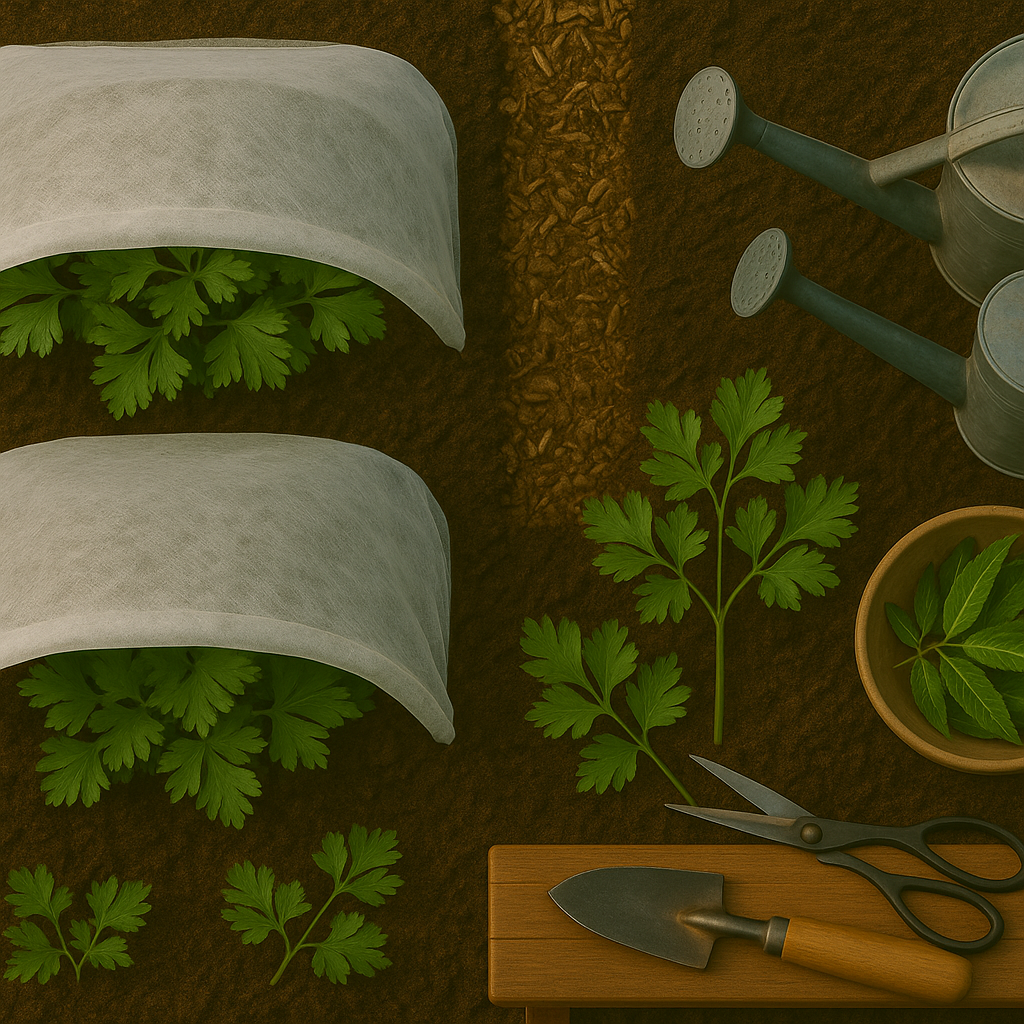
Keeping parsley healthy starts with some simple, proactive measures that can greatly reduce the risk of pest problems. Begin by watering plants at soil level to keep leaves dry and discourage fungal diseases—drip irrigation or a watering can aimed at the base works well. Clean your gardening tools before and after use to prevent spreading hidden pests or diseases from other plants.
Practice crop rotation by not planting parsley or other related herbs (like cilantro or carrots) in the same spot year after year; this interrupts pest life cycles and keeps the soil healthy. Consider using lightweight row covers early in the season to physically block insects like aphids and caterpillars from landing on your parsley.
Healthy soil is another powerful defense: add compost regularly and test your soil annually to ensure balanced nutrients, giving your plants the strength to fend off mild pest attacks. Always inspect new plants for bugs or eggs before bringing them home, since pests can hitchhike from garden centers.
Regularly checking the underside of leaves and stems helps spot trouble early—catching something like spider mites before they become a bigger problem. If you do notice signs of pests, act quickly by removing affected leaves or using natural remedies. Early intervention can stop an infestation in its tracks and save your harvest. With a bit of attention and routine, your parsley can thrive pest-free all season long.
Keeping Your Parsley Patch Healthy
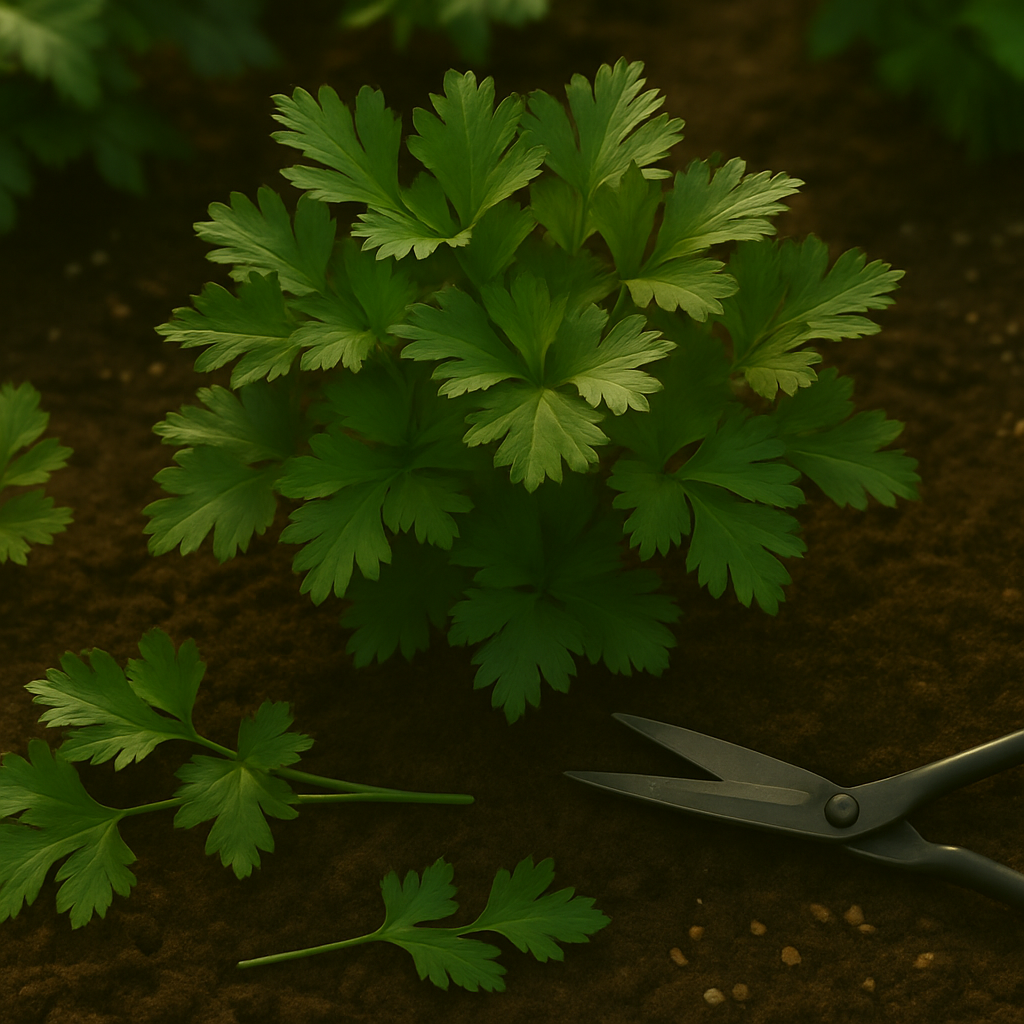
Healthy parsley plants are naturally more resistant to pests, so focusing on overall plant vitality is your best defense. Start by giving parsley plenty of sunlight—at least six hours a day—and well-drained, nutrient-rich soil. Avoid letting the soil dry out completely, but don’t keep it soggy either; parsley prefers steady, moderate moisture.
Pruning is another key: harvest the outer leaves regularly to promote fresh growth and allow good air circulation, which helps prevent fungal diseases and discourages pests from settling in. When it comes to fertilization, use a balanced, organic fertilizer every four to six weeks during the growing season—too much fertilizer can actually make parsley more attractive to pests.
Make it a habit to inspect your plants weekly for yellowing leaves, pests hiding under foliage, or signs of disease, catching problems early before they spread. Removing debris and weeds from around the patch also minimizes places for pests to hide.
Adopting a steady care routine not only boosts the health and productivity of your parsley but also builds its natural resistance, so you’ll enjoy lush, flavorful harvests with less worry about infestations.
